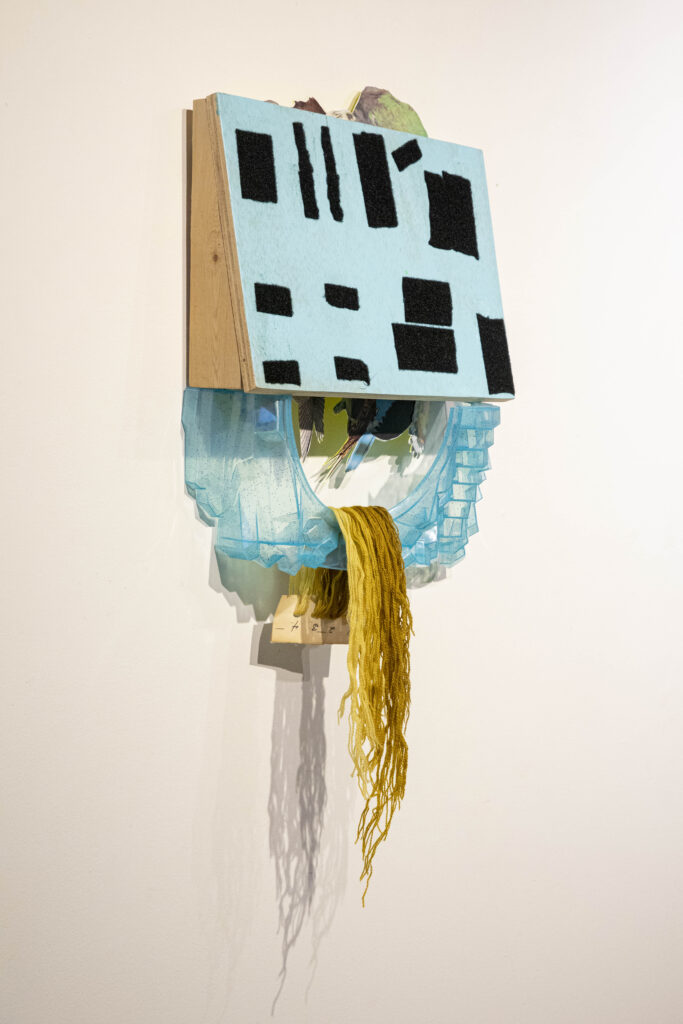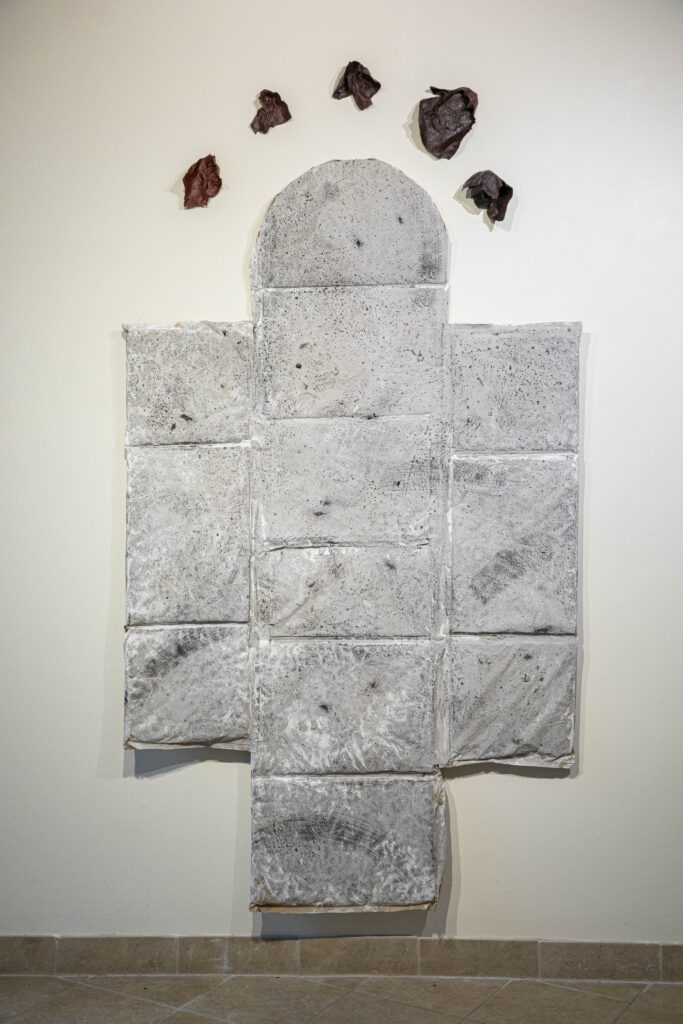An uncomfortable truth about a good deal of contemporary art – especially of the sort found on display in elite museums and art galleries and, as a result, reviewed in high-toned art publications – is that the esteem and attention it garners depends at least partly on its use of expensive materials. Would we be as impressed by much of the work of Jeff Koons or Anish Kapoor if they used papier mâché instead of porcelain or polished stainless steel? What would the typical Damien Hirst piece look like if created on a budget of hundreds of dollars rather than hundreds of thousands?
If you go only by the rarity and cost of the materials used, Nashville artist Lisa Bachman Jones’s The Odyssey: A Retelling, a solo exhibit that was on view through January 8 in the East Gallery of her city’s Parthenon, strikes you as deeply underwhelming, homespun to a fault. Jones relies primarily on cheap, readily available materials – mostly paper, fabric, and wood – to produce a collection of assemblages that looks distinctly handmade and homemade. And yet from within this ordinary toolbox has sprung an astoundingly creative, revelatory body of work that reinterprets one of civilization’s foundational narratives – Homer’s The Odyssey, the story of Odysseus’s circuitous journey home to Greece after the Trojan War – with fresh, often startling insights communicated in a bespoke visual language that’s abstract, evocative, and uncannily apt.

Jones takes specific episodes and characters from Homer and renders them visible through deft artistic choices that capture the essences of the source material. Some of the standout examples in the show include a brilliant piece called “The Space Between Scylla and Charybdis,” which uses Styrofoam, dog hair, textured latex, and other materials to envision an aerial view of the hero’s fraught passage between two of Greek mythology’s great sea monsters; the spine-chilling “Hades’ Pool,” which uses acrylic paint, hair and lint on canvas to suggest Odysseus’s visit to the underworld, where he must fill a ditch with sacrificial blood in order to receive guidance from the dead; and “Sacrifice for Athena,” an abstract piece that suggests the carcass of an animal being roasted on a spit, the shadows beneath suggesting smoke and, perhaps, the supernatural presence of the goddess herself. (Alan LeQuire’s resplendent 42-feet-tall statue of Athena in human form can be seen in the Parthenon’s main gallery just above the space where Jones’s exhibit is on view, making her work the perfect accompaniment to the museum’s main raison d’etre as a full-scale model of the original Parthenon in Athens, Greece.)

The amazements just keep coming, including two works that conjure some of the tale’s darkest aspects. In “House Slaves,” we’re given a bird’s-eye view of what appears to be a stone floor marked with the hand and knee prints of enslaved girls in Odysseus’s own household. Jones drew her inspiration from the 2017 translation of The Odyssey by Emily Wilson, who used the more historically accurate word slaves rather than the euphemistic term servants favored by most earlier translators.) And in “The Suitors’ Mouths,” Jones represents the human predators stalking Odysseus’s wife, Penelope, in his absence. Their effrontery, lust, drunkenness, and gluttony are alchemically conjured by Jones in a piece that incorporates, according to its wall text, “cardboard, plastic, pages from a book about rams, silicone cup, oxidized coins, fabric with raw meat graphic, regrind, gold spray paint, glue, aluminum can.” This is called making do with what’s at hand. It’s also called genius.
Top image: Blood Bowl by Lisa Bachman Jones. An off-white bowl-shaped sculpture sits on a pedestal. The inside of the bowl contains a reddish color. Photo by Annelise Loughead, courtesy of The Parthenon Gallery.
UnderMain: On the Road sends writers out of Kentucky to explore the visual arts in cities of the Midwest and near South. This program is generously supported by the Great Meadows Foundation.




